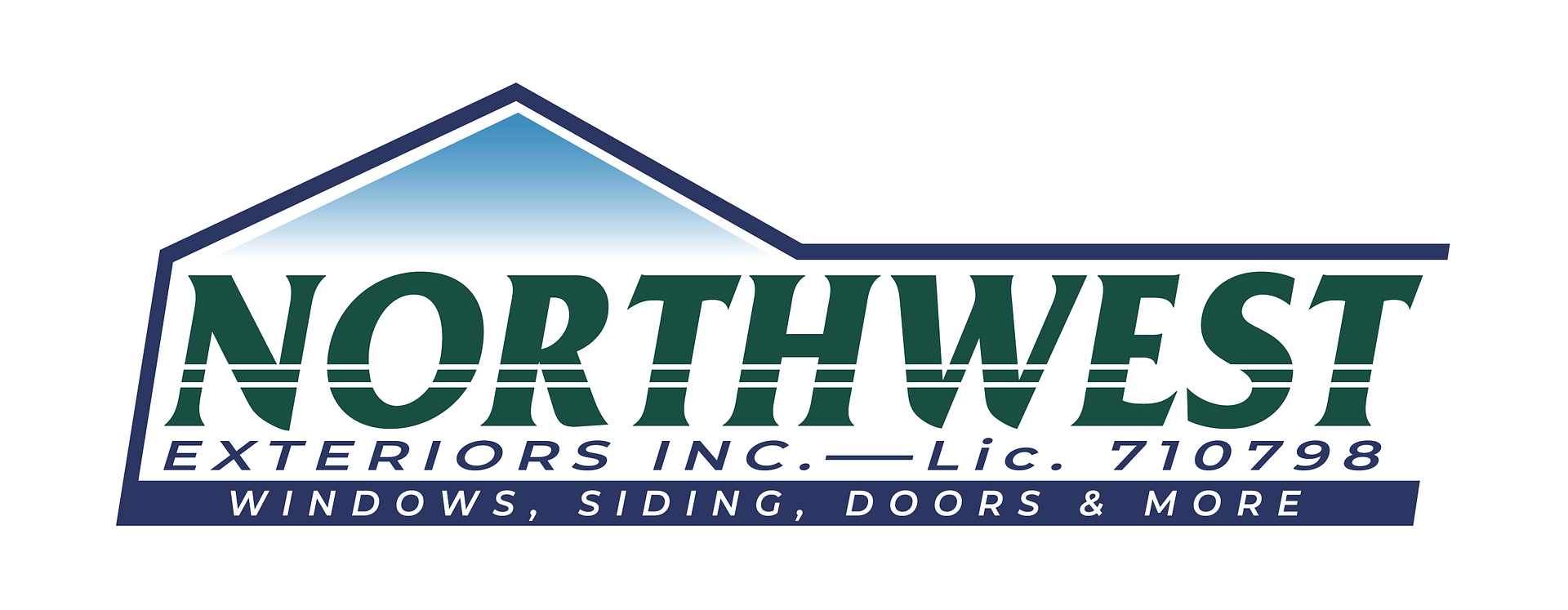
When you’ve lived in a house for many years, you may be on auto-pilot regarding energy costs. You get the bill, scan it briefly, and pay it. But after many years, your old, inefficient windows can cause bills to increase incrementally, in small amounts that you overlook until the bill gives you sticker shock. If your old windows are causing rising energy costs, it’s time to install modern, energy-efficient windows. Energy Star Windows were made for homeowners just like you.
Are high utility bills draining your budget? Many homeowners in Sacramento face this issue, and one solution is installing Energy Star windows. This guide will explore how energy-efficient windows lead to significant savings on energy expenses, compare them to standard windows, and highlight available financial incentives. By understanding the benefits of Energy Star windows, readers will learn how to reduce their energy costs effectively, enhance their home’s comfort, and improve its value with the help of experts like Northwest Exteriors.
Understanding Energy Star Windows and Their Benefits
Energy Star windows are designed to improve energy efficiency in homes by reducing utility costs and enhancing comfort. For homeowners considering Sacramento replacement windows, these windows feature advanced insulation and are evaluated through energy rating labels, which indicate their performance. By effectively managing sunlight and reducing noise, Energy Star windows contribute to significant savings and may qualify homeowners for tax credits. This section will delve into the features of Energy Star windows, the importance of energy efficiency, and how insulation plays a crucial role.
Defining Energy Star Windows and Their Features
Energy Star windows are engineered with specialized features that significantly reduce energy consumption and improve home comfort. These sacramento replacement windows utilize advanced insulation technologies and low-emissivity (Low-E) coatings to minimize condensation and effectively manage heat transfer, keeping homes warmer in winter and cooler in summer. By using the northwest exteriors profile and replacing traditional windows with Energy Star-certified options, homeowners can see a marked decrease in utility bills while also enhancing the overall energy efficiency of their living spaces.
The Importance of Energy Efficiency in Homes
Energy efficiency is crucial for homeowners seeking to reduce utility costs and enhance comfort within their living spaces. By investing in Energy Star windows, individuals can significantly decrease window costs associated with heating and cooling, leading to lower monthly bills. Furthermore, opting for materials such as fiberglass for window frames can improve insulation, ultimately optimizing the window replacement cost and potentially allowing homeowners to qualify for valuable tax credits.
Overview of Energy Rating Labels and What They Mean
Energy rating labels play a crucial role in helping homeowners understand the efficiency of their replacement windows. These labels provide information about thermal insulation properties, indicating how well the windows manage heat flow, which directly impacts utility bills. Additionally, they often highlight the levels of ultraviolet protection and potential for daylighting, helping consumers make informed choices that align with their climate needs:
The Role of Insulation in Energy Star Windows
Insulation plays a vital role in Energy Star windows, directly impacting energy efficiency and utility bill savings. High-quality insulation reduces heat transfer, so homes stay comfortable regardless of the season, which can significantly lower heating and cooling costs. By choosing window replacement options with superior insulating materials, such as wood or fiberglass, homeowners can qualify for incentives, further enhancing the financial benefits while also enjoying added noise reduction within their living environments.
How Energy Star Windows Reduce Energy Expenses
Energy Star windows reduce energy expenses through improved insulation, effectively managing heat transfer and maintaining comfortable temperatures within the home. By understanding how these windows operate in different climate zones, homeowners can appreciate the impact of reduced energy consumption on their utility bills. Additionally, case studies demonstrate significant rebate opportunities that further incentivize the switch to energy-efficient window options.
Mechanisms of Energy Savings Through Improved Insulation
Energy Star windows achieve significant utility bill savings primarily through their advanced insulation properties. These efficient windows greatly reduce heat transfer, keeping homes warmer in winter and cooler in summer. Homeowners often notice a remarkable decline in heating and cooling costs, which can lead to substantial savings over time, making Energy Star windows a valuable investment in overall home efficiency.
Temperature Regulation and Comfort in Your Home
Energy Star windows play a crucial role in temperature regulation, providing homeowners with a comfortable living environment throughout the year. By effectively reducing heat transfer, these windows help maintain consistent indoor temperatures, preventing unwanted heat loss during winter and excessive heat gain in summer. This consistent comfort reduces reliance on heating and cooling systems, thereby leading to lower utility expenses that homeowners can appreciate on their monthly bills.
The Impact of Reduced Energy Consumption on Utility Bills
The impact of reduced energy consumption on utility bills is significant, especially for homeowners who invest in Energy Star windows. By minimizing heat transfer and improving insulation, these windows help maintain a stable indoor climate, leading to lower demands on heating and cooling systems. This results in noticeable savings on monthly energy costs, allowing homeowners to allocate funds towards other home improvements or investments.
Case Studies Showcasing Savings From Energy Star Windows
Several case studies highlight the financial benefits homeowners can enjoy by investing in Energy Star windows. For instance, one family in Sacramento reported a 30% reduction in their annual energy costs after replacing old windows with Energy Star-certified options, resulting in savings that quickly covered their initial investment. Another homeowner noted that their heating bills dropped significantly during winter months, demonstrating how enhanced insulation and energy efficiency directly impact utility expenses.
Comparing Energy Star Windows to Standard Windows
When evaluating windows, understanding energy performance metrics is essential to assess efficiency. Energy Star windows provide long-term financial benefits, dispelling common misconceptions about energy costs. Furthermore, the lifespan and durability of these windows often surpass standard options. This section will detail how Energy Star windows outperform traditional windows in each of these areas, showcasing their value for homeowners.
Energy Performance Metrics: How They Stack Up
Energy performance metrics highlight the clear advantages of Energy Star windows compared to standard options. For instance, the U-Factor, which measures heat transfer, tends to be significantly lower in Energy Star windows, indicating better insulation and greater efficiency. Homeowners can expect lower heating and cooling costs because these high-performance windows effectively manage temperature fluctuations, providing a comfortable living environment year-round while contributing to substantial savings on utility bills.
Long-Term Financial Benefits of Energy Star Windows
The long-term financial benefits of Energy Star windows extend beyond immediate utility bill reductions, offering homeowners a sound investment for the future. By decreasing energy consumption with advanced insulation and efficient design, these windows contribute to substantial savings on heating and cooling costs over the years. Moreover, homeowners can often recover their initial expenses through increased home value and potential tax incentives related to energy efficiency improvement efforts.
Common Misconceptions About Energy Costs
Many homeowners hold misconceptions about energy costs, often believing that standard windows are a cost-effective option. They may underestimate the potential savings that Energy Star windows can provide, failing to recognize that investing in these energy-efficient windows ultimately reduces heating and cooling expenses over time. By replacing traditional windows with Energy Star-certified options, homeowners can see noticeable decreases in their utility bills, showcasing that selecting the right windows is a crucial factor in managing energy costs effectively.
Lifespan and Durability of Energy Star Windows
The lifespan and durability of Energy Star windows significantly surpass that of standard windows, making them a wise investment for homeowners. Typically, Energy Star windows are constructed from high-quality materials that withstand weather fluctuations for long-lasting performance. As a result, these windows not only contribute to lower utility bills through enhanced energy efficiency but also reduce the frequency and cost of replacements, providing additional financial relief over time.
Additional Financial Incentives for Energy Star Windows
Homeowners can benefit from various financial incentives when upgrading to Energy Star windows. This section will cover available rebates and tax credits for Energy Star products, helping to assess the return on investment for energy efficiency upgrades. Additionally, financing options for Energy Star window installation will be explored, providing practical insights into maximizing savings while enhancing home value.
Exploring Rebates and Tax Credits for Energy Star Products
Homeowners who upgrade to Energy Star windows can take advantage of various rebates and tax credits, significantly offsetting the initial costs associated with these energy-efficient products. Many local and federal programs offer financial incentives for those choosing Energy Star-certified options, making it easier to improve home efficiency while also enjoying utility bill savings. Understanding these incentives can enhance the overall return on investment and motivate homeowners to make sustainable choices for their living spaces:
Assessing the Return on Investment for Energy Efficiency Upgrades
Assessing the return on investment (ROI) for energy efficiency upgrades, such as installing Energy Star windows, is essential for homeowners looking to enhance their financial well-being. By analyzing the costs associated with new window installation against the expected savings in utility bills, homeowners can determine the long-term benefits of their investment. The combination of lower energy costs and potential rebates from utility companies makes Energy Star windows a practical upgrade that pays off over time, especially as energy prices continue to rise:
Financing Options for Energy Star Window Installation
Homeowners considering Energy Star window installations can access various financing options to make their investment more manageable. Many local banks and credit unions offer low-interest loans specifically for energy-efficient home upgrades, allowing individuals to spread out their payments over time. Additionally, some government programs provide incentives such as 0% financing or favorable loan terms for homeowners who choose to install Energy Star windows, making it easier to enhance home efficiency while ultimately leading to significant utility bill savings.
Maintenance and Longevity of Energy Star Windows
Proper maintenance and longevity of Energy Star windows significantly contribute to their effectiveness in reducing utility bills. Best practices for cleaning and caring for these windows not only enhance their appearance but also promote efficiency. Early identification of any issues can prevent costly repairs, helping homeowners enjoy the full lifespan of their windows compared to standard alternatives.
Best Practices for Cleaning and Caring for Your Windows
Maintaining Energy Star windows is essential for maximizing their energy efficiency and providing long-term performance. Homeowners should regularly clean the glass and frames with a mild detergent and a soft cloth to remove dirt and grime, which can otherwise hinder their insulating properties. Additionally, inspecting weather stripping for wear and tear can prevent air leaks, helping sustain comfortable indoor temperatures and reduce utility bills over time.
Identifying Issues Early to Prevent Costly Repairs
Identifying issues early with Energy Star windows is crucial for preventing costly repairs and maintaining optimal performance. Homeowners should regularly inspect the seals and frames for any signs of wear or damage, as even small leaks can lead to increased energy costs. Addressing these problems promptly helps maintain the windows’ energy efficiency, ultimately contributing to ongoing savings on utility bills while prolonging the lifespan of the investment.
The Lifespan of Energy Star Windows Compared to Alternatives
Energy Star windows typically boast a lifespan that significantly surpasses that of standard alternatives, making them a wise investment for homeowners. Constructed with high-quality materials designed to withstand various weather conditions, these windows offer durability and long-term energy savings. This longevity contributes to fewer replacements, allowing homeowners to maximize their investment while continually benefiting from reduced utility bills due to enhanced energy efficiency.
Making the Right Choice: Selecting Energy Star Windows
Selecting Energy Star windows involves critical considerations to maximize utility bill savings. Homeowners should evaluate factors such as window materials, energy performance ratings, and compatibility with home style. Choosing a qualified installer guarantees proper fitting and efficiency. Additionally, understanding warranty and support options can provide peace of mind, enhancing the overall value of the investment.
Factors to Consider When Choosing Your Windows
When selecting Energy Star windows, homeowners should consider factors such as frame material, energy performance ratings, and the specific style of their home. High-quality frame materials like fiberglass or wood not only enhance insulation but also contribute to overall durability, directly impacting energy efficiency. Additionally, understanding energy performance ratings helps homeowners choose windows that will effectively reduce utility costs while providing consistent comfort throughout the year.
How to Choose a Qualified Installer for Energy Star Windows
Choosing a qualified installer for Energy Star windows is essential to maximize the energy efficiency and potential utility bill savings associated with these high-performance products. Homeowners should seek contractors with a proven track record, solid customer reviews, and certifications specifically related to Energy Star installations. Engaging an experienced installer guarantees that windows are fitted correctly, thereby enhancing insulation and preventing air leaks that can undermine efficiency and comfort in the home.
Understanding the Warranty and Support Options Available
Understanding warranty and support options is vital for homeowners considering Energy Star windows, as these elements provide long-term satisfaction and protection of their investment. Most Energy Star products come with extensive warranties that cover defects in materials and workmanship, providing homeowners with the peace of mind that any potential issues will be addressed without incurring additional costs. By selecting reputable brands and qualified installers, homeowners can enhance their overall experience so they benefit fully from the energy savings and performance promised by their new windows.




